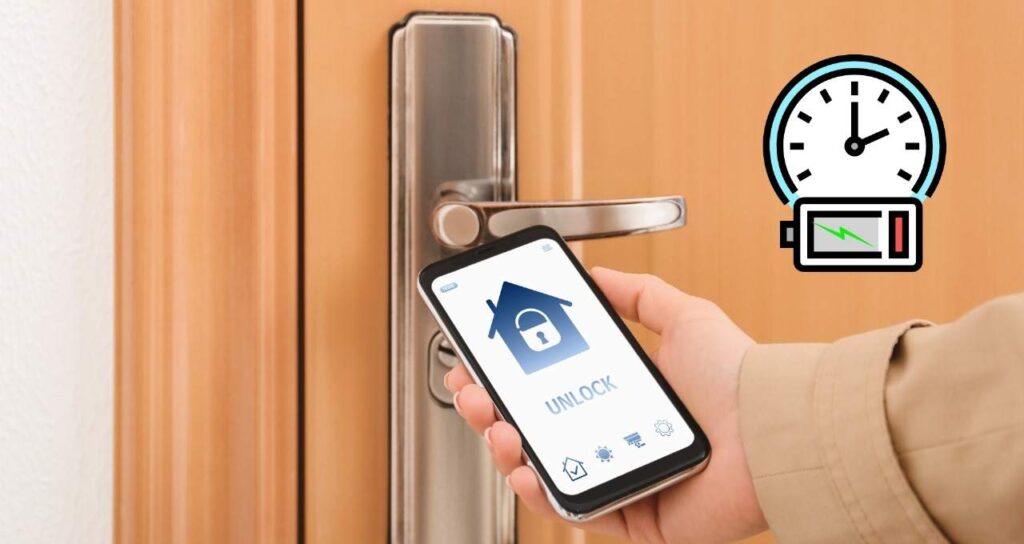As technology advances, smart door lock battery life has become an essential part of modern home security systems, offering convenience and added security. One important aspect of these devices is their battery life. Phrase Smart door block with battery service life What to expect and how to deal with a clogged battery understands and determines the typical service life of the battery. We cover the main considerations of housing owners. Take measures to take low battery and take measures to take when the battery dies. This knowledge is important to guarantee that smart door locks operate and are highly reliable.
This article delves into the expected battery life of keyless entry door locks. It provides detailed reviews of factors that affect the battery durability. We will consider how to change the battery on a door lock when it is dead. We will consider how to deal with the dead battery. We will also guarantee that it is not locked from home. By recognizing the signs of a low battery, you can adopt best battery care practices. You can maximize the performance and life of your smart door lock.
What is the Average Battery Life of a Smart Door Lock?
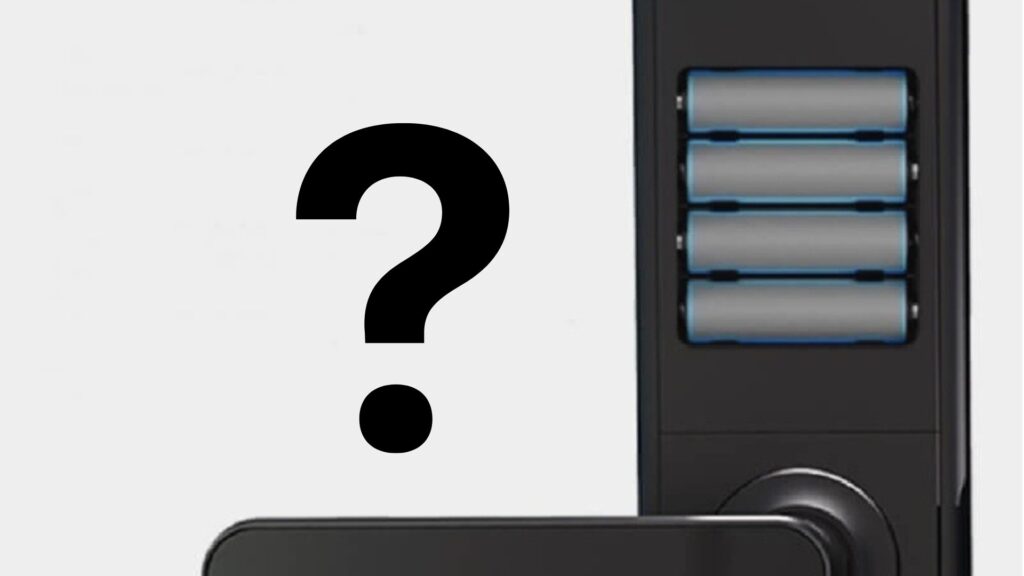
What is the Average Battery Life of a Smart Door Lock? The average battery life of a smart door lock typically ranges from six months to one year, depending on several factors. Battery life can be influenced by the frequency of use, the type of batteries used, and the specific smart lock model. High-quality batteries and regular maintenance, such as firmware updates and cleaning the lock mechanism, can help extend the battery’s lifespan. Additionally, features like Bluetooth or Wi-Fi connectivity may consume more power, potentially reducing the overall battery life. Keeping an eye on the battery levels through the companion app and replacing batteries promptly can ensure uninterrupted functionality of your smart door lock.
Factors Influencing Battery Life
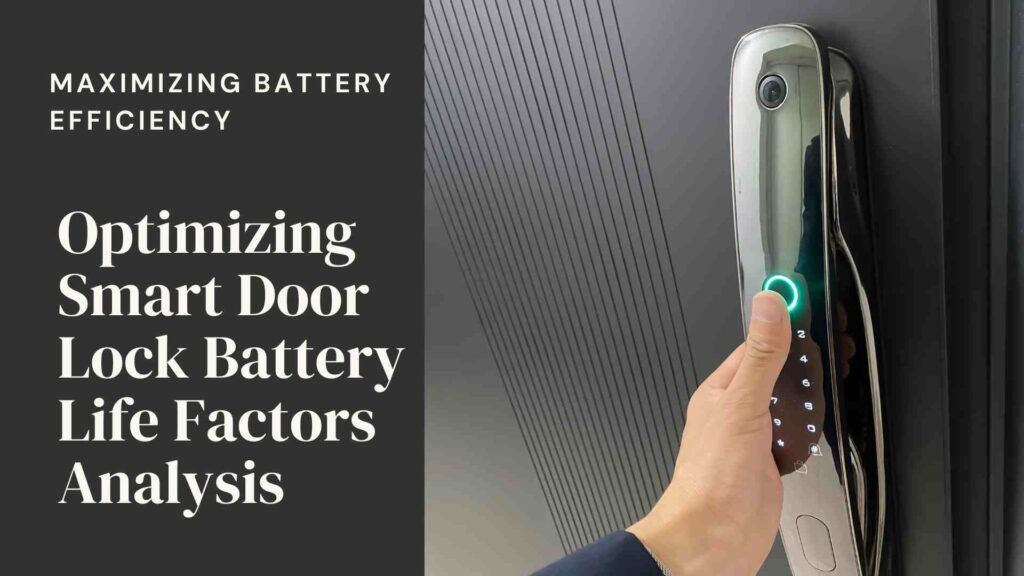
- Usage Frequency Frequent use of your smart door lock leads to faster battery depletion, especially in high-traffic households.
- Connectivity Continuous Wi-Fi or Bluetooth connections drain batteries more quickly due to constant data exchange.
- Climate Impact Cold weather significantly reduces battery performance, while extreme heat can also affect battery life, though to a lesser extent.
- Type of Batteries Used Lithium batteries offer longer battery life compared to standard alkaline batteries, making them a better investment for extended performance.
Signs of a Low Battery
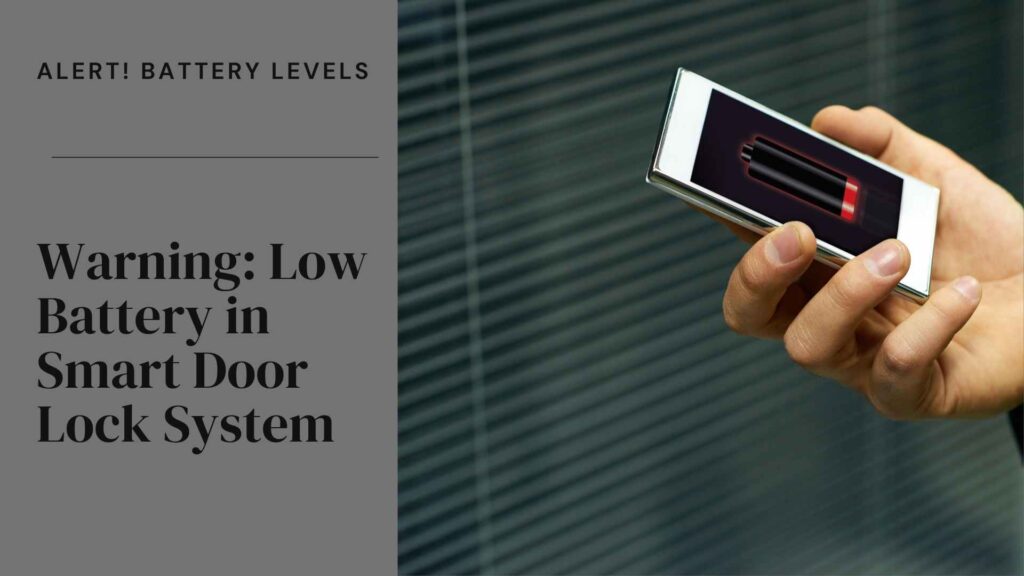
Recognizing When Your Smart Lock Battery is Low
Recognizing the signs of a low battery on your smart door lock is essential to avoiding annoying lockouts and keeping your home secure. Here are some common indicators that your smart lock battery is low
- Slow response time: One of the first signs of a low battery is a noticeable delay in the lock’s response time. If your smart lock is taking longer than usual to respond to commands, this is a clear indication that the battery is getting low.
- Dimmed Keypad Lights: Many smart door locks feature keypads that light up when in use. If you notice that your keyboard back light is dimmer than usual, it could be that your battery is low.
- Audible Alerts: Most modern intellectual castles are equipped with audio signals that warn you for various statuses, including low batteries. If you can hear the sounds and notices emitted from the castle, you will probably need to replace the battery in the near future.
- App Notifications: If your smart door lock is connected to the mobile app, you can receive low battery alerts directly on your smartphone. These notifications are designed to warn you to replace the battery before it runs out completely.
Handling a Dead Battery in Your Smart Door Lock
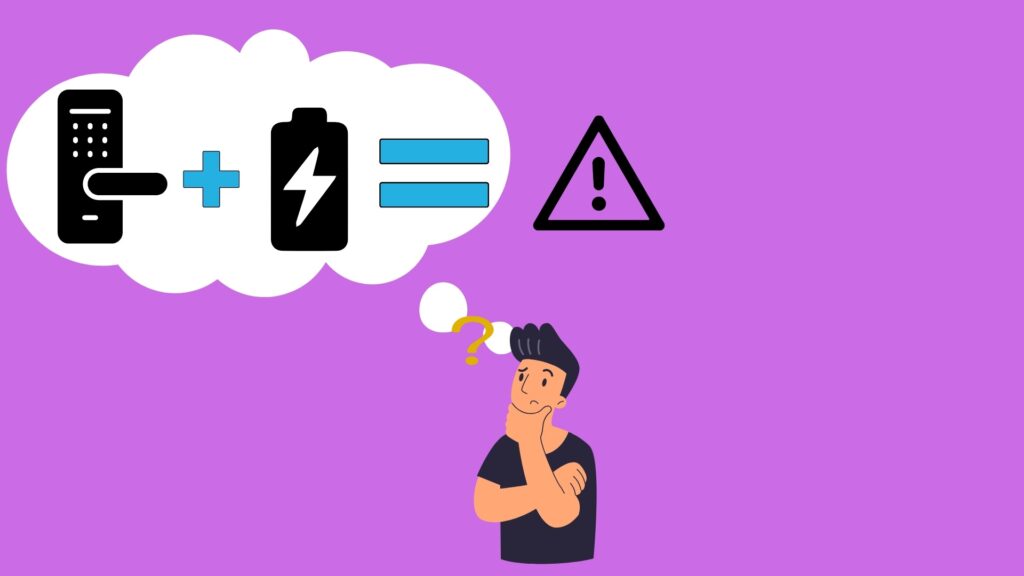
Events where the battery died in an intelligent door lock may be annoying, but there are several ways to manage this situation effectively. Here are some steps and important tips for managing dead batteries on a smart door lock
Keeping Spare Batteries Handy
Always keep spare batteries easily accessible near your main entrance. This ensures you can promptly replace them when you notice signs of a low battery or when the battery dies unexpectedly.
Using a Backup Key
Many smart door locks come with a traditional key as a backup. Keep this key in a secure yet accessible location. If your smart lock’s battery dies, use the key to unlock your door without relying on battery power.
Utilizing External Battery Terminals
Certain smart locks feature external battery terminals designed for emergency situations. Connect a 9V battery to these terminals to temporarily power the lock, allowing you to replace the internal batteries and regain functionality.
Emergency Power Supply Options
Consider investing in an emergency power supply specifically for your smart lock. These devices provide temporary power, ensuring you can unlock your door and address the battery issue promptly.
Tips to Maximize Your Smart Door Lock Battery Life
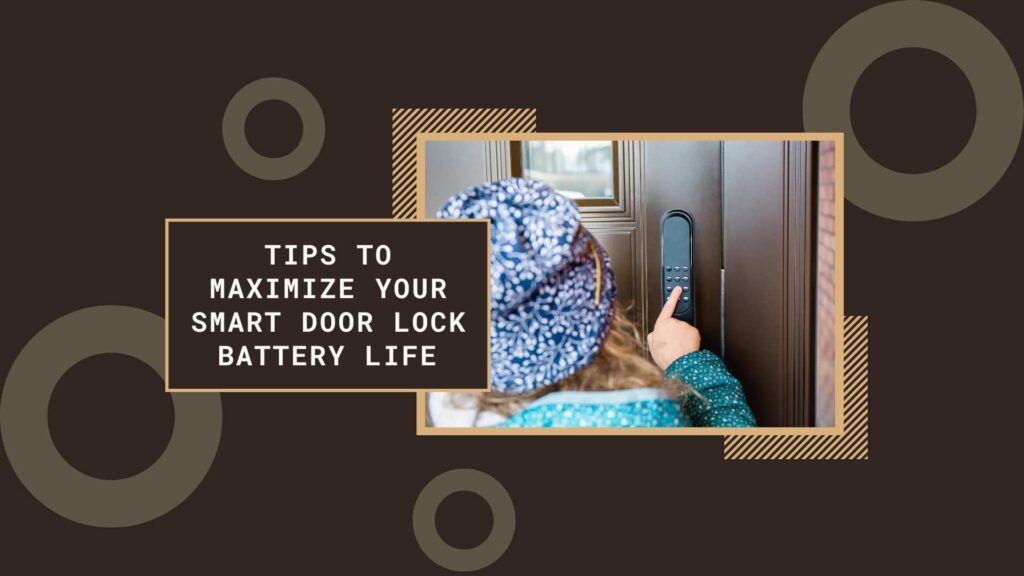
Maintaining smart door lock battery life requires proactive measures to ensure optimal performance and longevity. Here are essential tips to maximize the lifespan of your smart door lock batteries:
- Regular Maintenance: Keep your smart door lock clean and free of dust and debris. Check and clean battery contacts regularly to ensure good connections, which promotes efficient power transfer and extends battery life.
- Firmware Updates: In many cases, the manufacturer will update the firmware that optimizes the performance of intelligent are lock. These updates may include improvements in power management algorithms that can extend the battery life. Change battery in door lock .
- Using High-Quality Batteries: Make sure you buy high-quality batteries for your smart door lock, such as lithium batteries. These batteries normally last more than standard alkaline batteries and execute better in a range of temperatures, resulting in a longer smart lock battery life.
- Monitoring Battery Levels: Utilize the smart lock’s companion app or device dashboard to monitor battery levels regularly. It will help a lot to keep it updated. In this way, you can escape any type of damage. By staying informed about the current state of your door lock battery, you can replace them promptly before they run out completely, ensuring uninterrupted operation of your smart door lock.
Also Read More : What is a Smart Garage Door Opener?
Conclusion
Understanding the intricacies of smart door lock batteries is important to keeping the functionality and security of your home. In this article, we’ve explored the expected battery life of smart door locks and provided practical tips on how to change the battery on a door lock And effectively manage dead batteries. Recognizing the difference between automobile batteries with and without wireless/smart door locks is crucial for understanding their impact on battery life. Recognizing the signs of a weak battery is crucial. Perform aggressive measurements, like preparing a spare battery. Know how to unlock alternatives to avoid defects. Implement strategies like regular maintenance for better performance. Firmware renewal is essential for extending battery life. Use high-quality batteries to prolong smart door locks’ life.
In conclusion, being aware and prepared for your smart door lock’s battery life is essential. Knowing how to change batteries in the door lock will keep your home safe and accessible. Following the ideas and recommendations in this article can optimize your smart door lock’s performance. You can enjoy greater peace of mind by doing so.

